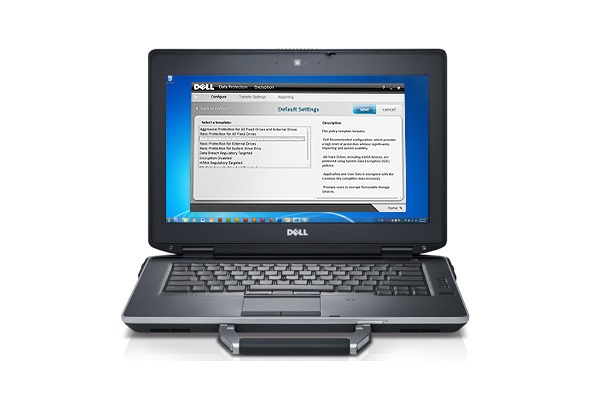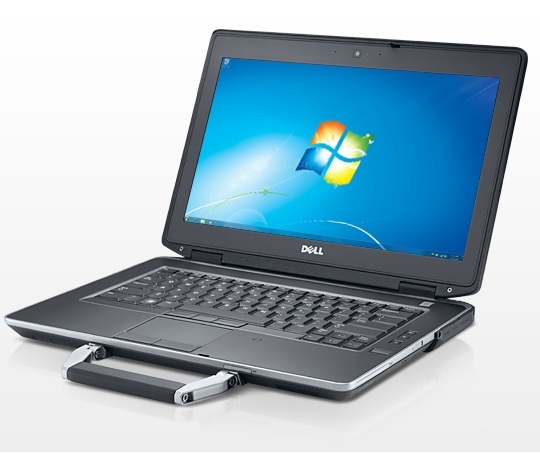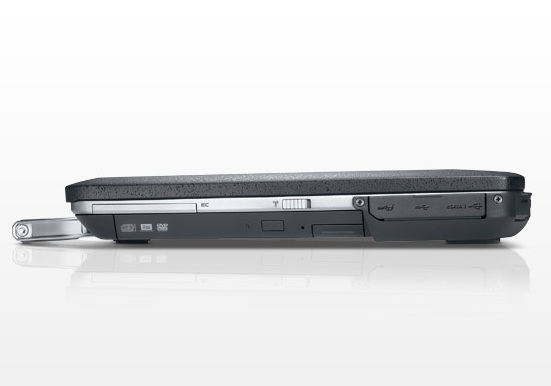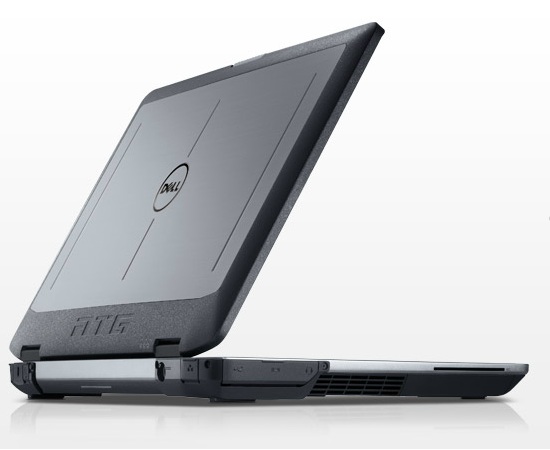Dell Latitude E6430 ATG review
Dell has kitted out its latest all terrain business laptop with Ivy Bridge chips and plenty of hard-wearing features, but it doesn't offer the level of customisation we're used to.
Dell’s latest Latitude gets off to a good start with a range of features that’ll please those who work in tough environments, such as exceptional build quality, an anodized aluminium lid and even insulated corners and port-covering flaps. Its hard-wearing design comes at a cost, though, with a mediocre screen and a specification that won’t sate high-end users. If you prize toughness over sheer speed, though, this is certainly worth the price.


Dell Latitude

Dell Latitude

Dell Latitude - Side on

Dell Latitude - Back
Dell's Latitude laptops are well-respected business machines, and the ATG-branded editions ratchet these hard-wearing corporate workhorses up a notch. The three initials stand for All Terrain Grade, which means Dell has made plenty of changes to ensure this particular Latitude can withstand the toughest of working conditions.
Hard as nails
Many of Dell's enhancements are obvious. The exterior is different from the average Latitude, for instance: the lid is constructed from anodised aluminium, and it's bordered by textured strips of magnesium alloy.
The hinges that connect the halves of the laptop are made from thick steel, and the corners on the bottom boast yet more metal, with more magnesium alloy used here, and the base is powder-coated - a process which, Dell claims, makes the machine more hard-wearing.

The rugged device comes with a 15in screen and has superb build quality
Build quality, as expected, is without reproach. There's no give in the Dell's thick screen, and the wristrest is similarly strong. The powder-coated base, meanwhile, is also rock-solid, and overall we'd say it's even tougher than the Precision M6700 workstation. It's also possible to get a briefcase-style handle, so you can carry the device around without a case.
The trackpad is responsive and its accompanying buttons just as comfortable. They're partnered by a mid-keyboard trackpad. Dell has not taken any risk with a keyboard, opting for a sensible layout and responsive keys solid typing action.
Many of Dell's other design touches are less obvious but just as pleasing. The ports - which include several USB sockets, HDMI and D-SUB outputs, Ethernet and eSATA - are hidden behind rubber flaps to prevent them being clogged by dust and dirt, and the keyboard is spill-resistant. A spring-loaded catch on the base can be used to remove the optical drive and, on the other side of the machine, the hard disk is held in with a pair of screws and secured in a shock-absorbing rubber caddy.
The screen is the one disappointment here. The resolution of 1,366 x 768 is poor on a 15in machine, even one that's designed to be rugged, and this resolution is matched by middling quality.
The average Delta E of 6.8, for instance, means the ATG is capable of merely middling colour accuracy the Apple MacBook Pro averaged 1.4 and, while the Dell's brightness level of 674cd/m2 is much better than the Apple's 333cd/m2, the Latitude didn't match its extreme brightness with good contrast: the ATG's 618:1 pales in comparison to the Apple's 1,023:1, and it means darker colours simply aren't as deep or distinctive.
Get the ITPro daily newsletter
Sign up today and you will receive a free copy of our Future Focus 2025 report - the leading guidance on AI, cybersecurity and other IT challenges as per 700+ senior executives
Mike Jennings has worked as a technology journalist for more than a decade and has been fascinated by computers since childhood, when he spent far too long building terrible websites. He loves desktop PCs, components, laptops and anything to do with the latest hardware.
Mike worked as a staff writer at PC Pro magazine in London for seven years, and during that time wrote for a variety of other tech titles, including Custom PC, Micro Mart and Computer Shopper. Since 2013, he’s been a freelance tech writer, and writes regularly for titles like Wired, TechRadar, Stuff, TechSpot, IT Pro, TrustedReviews and TechAdvisor. He still loves tech and covers everything from the latest business hardware and software to high-end gaming gear, and you’ll find him on plenty of sites writing reviews, features and guides on a vast range of topics.
You can email Mike at mike@mike-jennings.net, or find him on Twitter at @mikejjennings
-
 ‘Phishing kits are a force multiplier': Cheap cyber crime kits can be bought on the dark web for less than $25 – and experts warn it’s lowering the barrier of entry for amateur hackers
‘Phishing kits are a force multiplier': Cheap cyber crime kits can be bought on the dark web for less than $25 – and experts warn it’s lowering the barrier of entry for amateur hackersNews Research from NordVPN shows phishing kits are now widely available on the dark web and via messaging apps like Telegram, and are often selling for less than $25.
By Emma Woollacott Published
-
 Redis unveils new tools for developers working on AI applications
Redis unveils new tools for developers working on AI applicationsNews Redis has announced new tools aimed at making it easier for AI developers to build applications and optimize large language model (LLM) outputs.
By Ross Kelly Published
-
 Google layoffs continue with "hundreds" cut from Chrome, Android, and Pixel teams
Google layoffs continue with "hundreds" cut from Chrome, Android, and Pixel teamsNews The tech giant's efficiency drive enters a third year with devices teams the latest target
By Bobby Hellard Published